 There’s a lot of advice floating around the internets about how to make a rain barrel. Most barrel pundits suggest drilling a hole in the bottom of a barrel and installing a faucet, a kind of connection called a “bulkhead fitting”. Unfortunately such improvised fittings have a tendency to leak. My favorite way to make a rain barrel is to take a 55 gallon drum, use the preexisting fittings on the top and turn it upside down, a process explained nicely here (complete with a list of parts), by B. Chenkin who will also sell you a kit at Aquabarrel.com.
There’s a lot of advice floating around the internets about how to make a rain barrel. Most barrel pundits suggest drilling a hole in the bottom of a barrel and installing a faucet, a kind of connection called a “bulkhead fitting”. Unfortunately such improvised fittings have a tendency to leak. My favorite way to make a rain barrel is to take a 55 gallon drum, use the preexisting fittings on the top and turn it upside down, a process explained nicely here (complete with a list of parts), by B. Chenkin who will also sell you a kit at Aquabarrel.com.
To get started, you get a ubiquitous 55 gallon drum with two threaded “bung” holes that look like this:
 A good source for this kind of barrel is your local car wash. Just make sure that the barrel you scavenge didn’t have nasty chemicals in it. You punch out the center of one of the bungs, as shown, and insert a threaded PVC fitting. A few more PVC parts from the sprinkler section of your hardware store, a brass hose fitting with a valve, and you’ll have this:
A good source for this kind of barrel is your local car wash. Just make sure that the barrel you scavenge didn’t have nasty chemicals in it. You punch out the center of one of the bungs, as shown, and insert a threaded PVC fitting. A few more PVC parts from the sprinkler section of your hardware store, a brass hose fitting with a valve, and you’ll have this:

Glue that up with some PVC cement, wrap the threads with teflon tape, and you’re almost ready to collect rainwater. But first, turn the barrel upside down, drill a hole for the down spout another hole to insert an overflow pipe made out of a threaded 3″ waste pipe fitting:
 The last step is to prop the barrel up on some wood or concrete blocks to give some clearance for your hose connection and some extra elevation for a gravity assist to help push the water through a garden hose.
The last step is to prop the barrel up on some wood or concrete blocks to give some clearance for your hose connection and some extra elevation for a gravity assist to help push the water through a garden hose.
The overflow connection is another reason I like Chenkin’s design. It’s important to keep rainwater away from your foundation especially when, like us, you live on a hill. The picture at top shows our barrel installed with the overflow pipe connected to a pipe that runs down to the street. Los Angeles’ building code required us to run our rainwater out to the street, where it helps wash pollution into the LA River and the ocean (see creekfreak for more on LA’s pesky water issues). At least we’ll be channeling some of that water, via the barrel, to our new fruit trees. Those of you with flat yards could simply connect up an overflow pipe that would take the water at least ten feet from the foundation.
In Southern California, where rain never falls between May and October, a 55 gallon drum won’t meet much of our irrigation needs, though Chenkin’s design does allow you to chain multiple barrels together. What we really need is an enormous cistern, something with a capacity in the neighborhood of around 10,000 gallons. Ideally houses here, as in the ancient Roman world, would have been built with huge underground holding tanks. A small rain barrel like this makes more sense for those of you who live in places with rain throughout the year, where a small amount of collected rainwater could be used to bridge a gap in rainstorms. I put this rain barrel together as a test and because I was tired of looking a blue drum that sat in the backyard for a year giving our patio a methamphetamine lab vibe.
Again, for complete instructions and a list of parts visit Chenkin’s ehow page or, if you’re not adept at perusing the isles of the local hardware store, buy a kit from him through Aquabarrel.
[Editors note: due to spamming (are rain barrel enthusiasts really that excited about internet pharmaceuticals?) we’ve had to shut down comments for this post.]
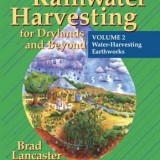
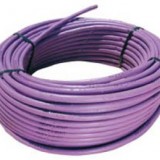
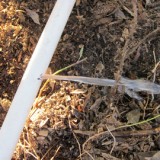
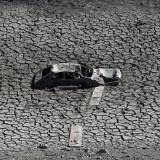
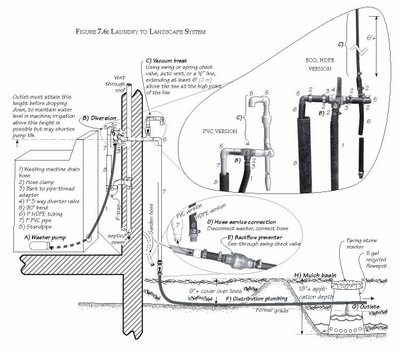

fun with water – have you tried a TDS meter with your water
Catch? TDS being total dissolved solids. This gives you a idea of how much ‘stuff’ is in your water. You can buy a small handheld unit for $20 through Amazon.
I like to compare my tap water, well water, and rain water. The general rule is don’t drink any water with over 200PPM.
My city water is 700PPM and with a RO filter it goes down to 50PPM which is potable.
My well water is 3200PPM. Pretty much a salt bath.
The 500 gallons of rainwater has consistently tested at 8PPM. How crazy it that the best possible water I can obtain is coming from the roof of a 40 year old trailer.
Note: PPM is just a measure of water conductivity. It does not tell you what is actually in the water.
I like that design! I found that with trees near my roof I needed to rig up a simple pre-filter between the downspout and the barrel (nothing more fancy than putting a piece of screen over the top hole in the barrel) and I got a pre-made gutter hole screen at a hardware store to keep the leaves in the gutter from clogging the hole that feeds the downspout. Screening keeps the inside of the barrel from gunking up with rotting crud. Also when choosing a used barrel one might want to find out what it was previously used for – some chemical residues might not be healthy for a food garden.
That sounds like a great design! I am lazy and live in New England, which rarely lacks for rain, so I just commandeered some beer coolers from my roommate and shoved them under our downspout. If it rains a lot they overflow since they’re not very deep, and they certainly fill with silt, but they get me through dry spells. The only issue I’ve had is that once, after a particularly rainy period, they started harboring mosquito larvae. But that’s easily fixed.
This is really fantastic, I’ll be linking to this.
Too bad these things are prohibited by law in Colorado.
I don’t know what kind of farm and home stores you have available (we naturally have a lot in Iowa), but I found the perfect plastic tank fittings that make using open top barrels useable. The fittings are meant for sprayer tanks, but they have gaskets included and are resistant to UV rays and more extreme outdoor exposure. I had to make a lid with a filter screen to keep debris and bugs out but that was simple enough.
So many excellent comments here!
Mikey–interesting tip with the TDS meter. If I were going to drink this (which I’m not), I’d also want to filter it and run it through a uv filter to kill bacteria.
KenM–Excellent tip! I have hardware cloth at the start of the gutter to intercept leaves (and no nearby trees).
Laura–Viva Beer Coolers!
Anonymous–Another excellent tip. UV damage is an important issue to consider–this may be a problem with my choice of barrels. You can also get large cisterns at farm stores I understand.
Pingback: Growing Strawberries in a Self Watering Gutter (SIG). | Root Simple
Pingback: Growing Strawberries in a Self Watering Gutter (SIG). | Content Curated By Darin R. McClure & a few photos
Pingback: Growing Strawberries in a Self Irrigating Gutter (SIG). | Ed Hagopian
I live in an area that freezes in the winter. How do you keep the water from freezing?